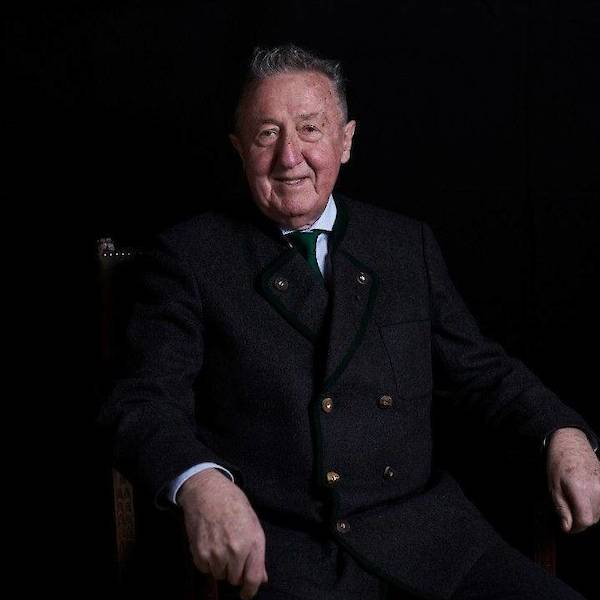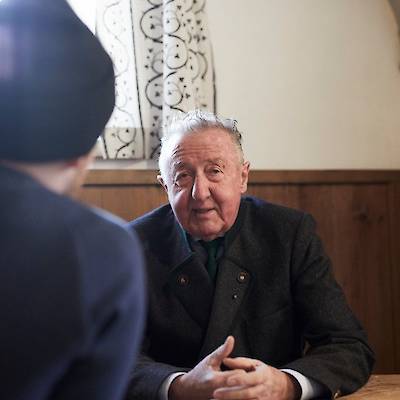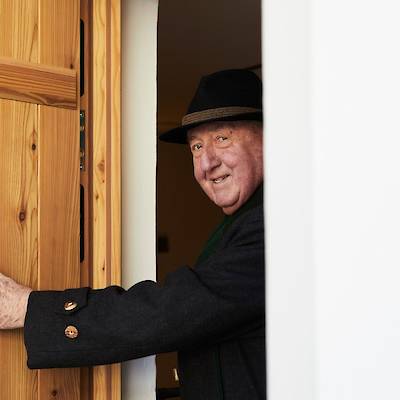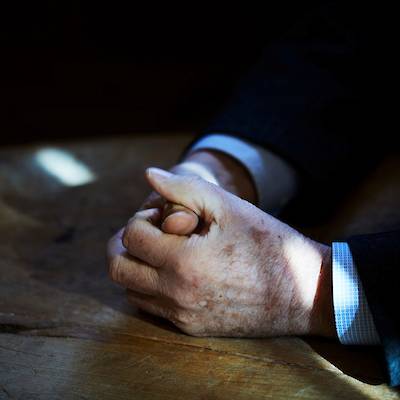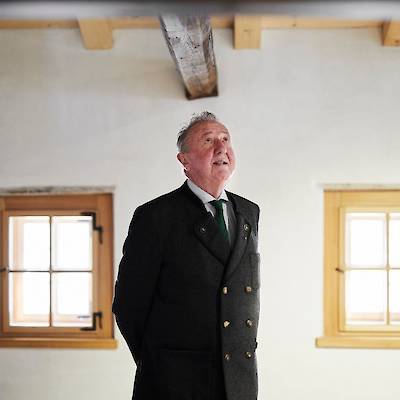Hermann Mayrhofer
...is a member of one of the oldest families in Leogang. The family has been native to Leogang for over 450 years. Mayrhofer himself became head of the local authority early on in his life, which is how he got to know Leogang and its people much better:
My job enabled me to gain an insight into rural life and the inner workings of the people here.
During that time, it became clear to him that the village was in danger of losing its identity. In the 1960’s and 1970’s, the increasing tourism, which brought a lot economic growth, left its mark on Leogang.
Especially in the year 1970, the successful development of winter tourism was clearly noticeable
...Hermann Mayrhofer explains. Most people were now occupied with providing enough beds for the tourists arriving. Understandably, there was hardly any time for the history and traditions of the region.
Raising awareness
But, for Hermann Mayrhofer, exactly these topics played an important role in his life. “I think that’s something I got from my parents and my teachers at school – this understanding for the meaning of one’s own history.” In his job as head of the local authority, he had smaller monuments restored and tried to raise awareness for extraordinary stories in the rural day-to-day life. “Regardless of whether it was the imperial lime tree or Saint Anne’s Chapel and its one-of-a-kind altar, I showed the locals that there were stories behind these that concern us and our village,” Mayrhofer recounts. And it was exactly this altar – with its mundane representations of mining and its portrayals of patron saints – that started the Leogang Mining and Gothic Museum. “That’s what started the idea to create a museum that specialized on mining and Gothic art.”
Rather unusual
You see, the museum in Leogang is unlike any other mining museum. There are no miner’s lamps or iron picks to be found. And while there is a mineral collection, it is not the central element. “The Middle Age was the peak time of mining in Leogang and Gothic Art was the predominant form of art at the time. That’s what made it clear to us, that, besides displaying aspects of mining in our museum, we also wanted to showcase the works of art that were created in our area,” Mayrhofer explains the natural connection of the two components of the museum, which some people might not understand at first. Mayrhofer noticed a lack of understanding from outsiders several times. Before the museum was opened in 1992, Mayrhofer worked on establishing a show mine in Schwarzleo valley. “Back then, some were wondering why people wanted to climb down that hole all of a sudden,” Hermann Mayrhofer laughs. This skepticism, however, was soon replaced with curiosity and the show mine became a success with tourists and locals alike.
A museum without exhibits
Some people showed a similar amount of skepticism when Mayrhofer embarked on the project of opening the Mining and Gothic Museum without having a single exhibit to showcase. “Thinking about it now, I admit we were a little crazy.” Despite of, or maybe, exactly because of this craziness, the museum opened its doors in 1992. The few existing exhibits were carefully placed, and every room had its own focus. Experts from all over the world were fascinated and the number of visitors increased continuously. Mayrhofer is convinced that, “if you create something ordinary, nobody will be for or against it.“ He is also happy about the fact that he never let himself get mislead by anything or anyone. In the year 2003, when over 20,000 people visited the exhibition “Maria – Light in the Middle Age, it became clear that the museum had become too small. In the following two years, it was enlarged by 250 square meters underground. Today, it consists of two connected buildings and a show forge. The museum has cooperations with the Cultural Forum in Prag, permanent loans from the Leopold collection, as well as exhibits from the Louvre. “We were focused on high quality from the beginning, and made some very expensive purchases, for which I had to beg a lot for, but, which, in the end, are worth it,” Mayrhofer explains, convinced that he chose the right path.
A future with history
To Hermann Mayrhofer, it is clear what this path is going to look like for the Mining and Gothic Museum. There is a list of over 15 titles for future exhibitions in his office, some of which are being worked on already. Additionally, he wants to get young people more involved with the museum so that the history of mining in Leogang and the identity of the village can be maintained in the decades following. “Because,” Mayrhofer remarks, “even though I’ve always lived in Leogang, I am an open-minded European citizen and I’ve travelled a lot. My affinity with my home is not an expression of some kind of nationalism, but a necessity in order to understand the global context in our modern world.”
